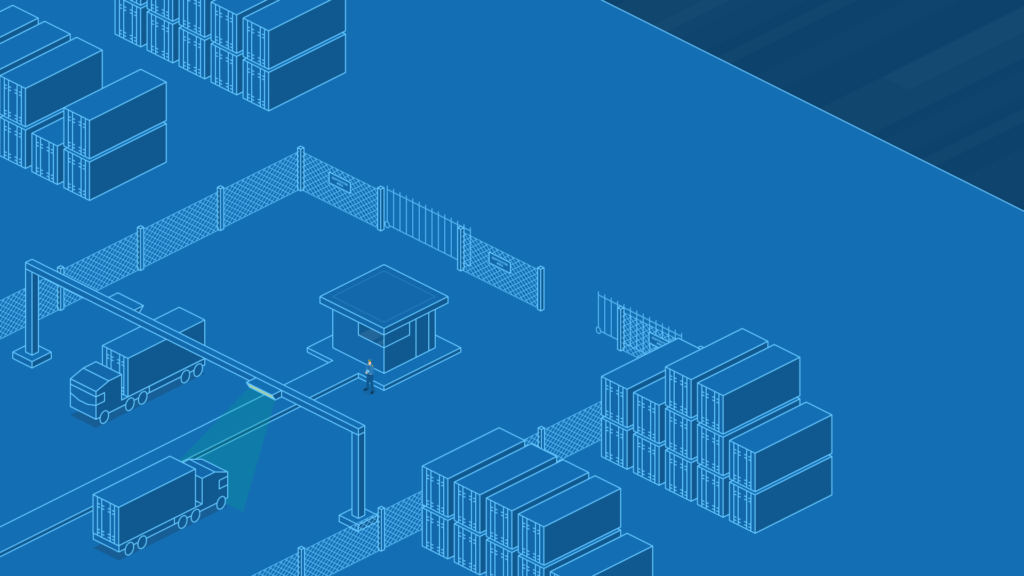A new smart module that provides dynamic overview and control of yard planning gives the Grieg Connect terminal operating system (TOS) even more muscle and power.

“The Yard Planning module adds to our bank of tools supporting strategic decision-making and cost control for terminal operators. Through optimized used of yard space, terminals can deliver even better service to customers. Furthermore, the module’s machine learning capability enables optimal container selection and placement while reducing container shifting,”
Tore Skalde Product Owner Terminal
The back story (the problem)
Imagine this scenario at a terminal that hasn’t yet invested in data-driven yard planning: it’s a busy week with feeder vessels loading and discharging, containers arriving from local factories and shippers, and other trucks collecting full boxes and goods for onward logistics. There’s a lot going and moves in every direction.
Moves from and to arriving or departing vessels and trucks are, of course, value-added (VA) in that they are income generating. But shifting containers within the yard itself, for example grouping a certain shipper’s containers together or creating an export stack in one place, are non-VA and a drain on resources, more so if it’s all a bit haphazard. Some moves are just plain irritating, for example retrieving a specific container from the bottom of a cell – you have to move all the others just to get to it.
There’s a shift leader or foreman yelling at his forklift drivers and stackers where to place containers, or they may be just placing containers themselves in any space that’s available. Containers already in the yard may be empty, others damaged, but the sorting isn’t great.
The guy in charge plots all container moves in his Excel spreadsheet but his head is about to explode. He’s got a week off from tomorrow and his deputies don’t know everything he knows, so next week could be rather chaotic. No-one has the full picture of every container in the yard, its condition and precise location, let alone what moves it has made since it first arrived. Somebody will have to spend a lot of time finding the correct boxes when they are due on that boat to Rotterdam. And at the end of the day, all that reporting!
Another forward-thinking terminal may already have a digital terminal twin giving a bird’s eye visual representation of the entire complex. But their yard planning is still analogue. Containers still get placed where there happens to be space, putting a lot of power in the hands of individual staff members, drivers and stackers. Not that these guys can’t handle it, it’s just that they’re sitting on that specialist know-how and only they can access it. Sound familiar?
Our dynamic solution

We’ve made your aim our aim, and that is to optimize container throughput and turnaround time (ETA/ETD) for vessels and trucks. While our Kraken Tools TOS can specify preselected ways to place a container, for example grouping boxes in export stacks or by shipper, weight, size or type (e.g. reefer) etc., the Yard Planning module uses artificial intelligence (AI) to recommend exactly where to place them, or the best available option.
This value-added smart placement means less driving around the yard and overall fewer moves. We can easily configure the module to operational preferences based on a terminal’s specific goods and feeder business. It cuts time spent on non-VA shifting, searching for the correct containers, administrative efforts (documentation and reporting) and the need for specialist knowledge. It also helps on VA moves, for example suggesting where to place containers coming directly from a vessel or off a truck.
Essentially, the module makes the process of storing containers in different yard areas and aligning with your strategies much easier, and according to multiple parameters, such as putting all same-size containers belonging to a given shipper in the same place. It also records the move history of each container for built-in traceability. The system logs every executed move from Gate In, Pick and Discharge (to the yard from a vessel or truck or vice-versa) to Gate Out and Stripping and Stuffing.
For a guide on how to choose the best TOS for your terminal please visit: How to select the best Terminal Operating System (TOS)
Super user-friendly
While digital twin of the terminal operating system (TOS) – or GIS master map – provides a bird’s eye view, the Yard Planning module has a simplified interface where you can google for containers using various filters and click for information on each one. It shows how many containers are in each cell as well as the status of each one, for example if it’s damaged or if it needs a pre-trip inspection (PTI) in case of reefers.
For stackers and truck drivers, the module dashboard on their tablet enables them to drive right to a selected container and choose the move they want. Because the system knows all about the container it can tell them immediately where it should go, as well as its condition, so they can tick off a damaged container if necessary.
“It’s big and bold and really easy to use for everyone, in the office and on the ground,” says Skalde.
Key benefits

Less container shifting means faster operations. Terminals are process-driven so faster operations mean you can earn more money through faster ETA to ETD for vessels and trucks, and administrative time saved. All this strengthens margins in what is a low-margin business.
Because you know exactly where a container is at all times, you’re no longer dependent on specific staff members and everything they have stored ‘up top’. With our solution a summer trainee could step in and do the job just as effectively as the guy who’s been there for 30 years.
The module is seamlessly integrated as an add on into our terminal operating system (TOS) . You can also give access to trusted third parties such as cargo owners, who for example can see with just a click or two how many empty containers they have at your terminal which they can collect or fill on site and send on their way.
“Automation is all about efficiency and streamlining processes that previously gobbled time and money. This module takes the stress out of yard planning by doing all the thinking for you. We’ve right now implementing the solution for GreenPort in Norway and they’re really excited by the possibilities it opens up.”
Tore Skalde Product Owner Terminal

Get in touch with our positive sales team
To get more information on the yard planning module and other smart features in our terminal operating system (TOS)
